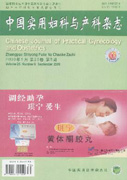Abstract: Objective To determine the characteristics of anatomical distribution of pelvic deep infiltrating endometriosis (DIE), and the correlation between visual and histologic findings of DIE at laparoscopy. Methods 79 patients with DIE underwent radical resection of endometriosis by laparoscopy. Various focus were resected in laparoscopic diagnose during the procedure and sent to pathological examinations. After pathological diagnosis were confirmed, the positive predictive value (PPV), negative predictive value(NPV), sensitivity(SEN)and specificity(SPE) for different endometriosis lesions diagnosed by laparoscopy were calculated. Results In the 274 focal lesions obtained by laparoscopy, DIE lesions tended to locate in posterior part of the pelvis were 242 (88.32%), and more in the left side (27.73%, 76/274) than right side (24.45%, 67/274). The most focus was uterosacral ligaments DIE (39.42%), rectum DIE (16.06%), rectovaginal septum DIE (12.04%) and posterior fornix DIE (9.12%) was in descending order. The coincidence rate of laparoscopic diagnosis for single DIE lesion was 92.7%, including intestinal wall lesion (100%), posterior fornix lesion (100%), rectovaginal septum lesion (96.97%), left and right uterosacral ligament lesion (83.64% and 90.56%), left and right ureter lesion (83.33% and 66.67%). PPV, SEN, NPV and SPE for diagnosis of DIE confirmed by laparoscope were 98.83%, 92.70%, 45.95% and 85%, respectively. Conclusion According to the pathology, the positive rate of DIE diagnosed by laparoscope is high.

